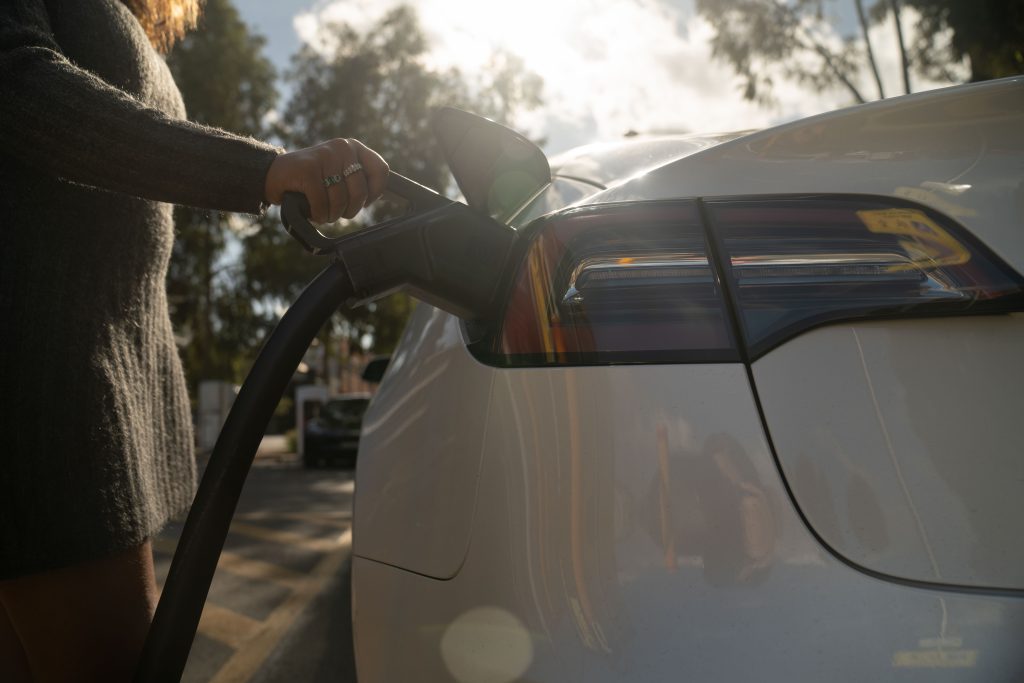Answering your EV questions

The popularity of electric vehicles (EVs) is growing, so we put the call out through RAA’s Facebook for some of your common questions.
As part of the ‘Ask Andrew’ series, we’ve called on RAA’s Program Director for Electric Vehicle Charging Andrew Howard for expert help.
Watch the video below and read on to find out more.
1. How long does it take to recharge an EV, compared with refuelling an ICE (internal combustion engine) vehicle?
It takes a few minutes to refuel an ICE vehicle, depending on the size of the fuel tank, how full it is, how much you’re adding and the pump’s flow rate.
The time it takes to charge an EV varies. If you’re using an ultra-rapid (200kW) DC charger, you can take your EV from, say, 10 per cent to 80 per cent charge in 15 to 45 minutes. If you’re using a standard three-pin AC power socket – known as trickle charging – it can take up to 24 hours to fully charge with your car parked at home.
“The average EV gives you about 400km from a single charge, which should be ample for a typical week’s worth of driving,” Andrew says.
2. I’ve seen social media reports about lithium-ion battery fires. Are EVs safe?
Of the seven or so EV battery fires recorded in Australia, about half were started by a separate fire. Lithium-ion battery fires are more likely to occur in e-bikes, e-scooters and smartphones.
In fact, research shows that electric vehicles are less likely to catch alight than ICE vehicles. EV manufacturers go to great lengths to improve battery safety and encase them in thick metal to protect them in collisions with other objects or vehicles.
If a lithium-ion battery does on a rare occasion catch fire, it poses additional challenges, but emergency services are rapidly adapting with new techniques and equipment. Thermal runway, caused by overheating lithium-ion batteries, is extremely rare in EVs. This issue has more to do with a poor-quality product containing a lithium-ion battery than the battery itself.
3. Are charging times the same for each EV brand?
Charging time has more to do with the battery than the vehicle brand. Factors impacting charging time include the EV’s battery type, technology, size, temperature, and how much charge it already has. Some of these factors vary across EV brands, so charging times also vary.
If you’re buying an EV and you see some impressive charging time figures, look at the finer details. Some charging times are based on optimum conditions and rely on a 350kW charger when the real-world peak charging rate will be less than that.

4. If the EV battery is out of warranty, how does that affect the resale value?
Most manufacturers offer an eight-year or 160,000km warranty and guarantee at least 70 per cent capacity after that period or distance. Although batteries are a large part of an EV’s cost, increasingly sophisticated technology means they rarely need replacing and usually last at least the vehicle’s life.
Some of the common issues with used EVs are the perceived technology risks and costs and the competitive market which is seeing prices fall rapidly. Consumers might also be concerned about their lack of ability to accurately check the health of a battery in a used EV.
If you’re buying or trading in a used EV, the price will reflect the age and condition of all components. The used EV market is still in its infancy, but the price of lithium-ion batteries is forecast to drop by nearly 40 per cent by 2030 and this will flow through to trade-in prices.
5. If I drive 500km a week, how long will it take to recoup the EV price premium?
Again, this depends on various factors but let’s consider the following basic example to get an idea of how long it’ll take to recoup the cost of purchasing an EV.
According to EV Council data, the average Australian drives 12,000km each year and spends about $2500 on petrol. This equates to about $0.20 per kilometre, so if you’re driving 500km, you’re spending about $100 per week on fuel. In comparison, the cost of driving a battery electric vehicle (BEV) is about $0.04 per kilometre, so 500km will cost about $20 per week.
“With fuel and other savings, it costs about $4160 less each year to drive a BEV so if, say, the price premium is $15,000 you’ll make up that difference in about three and a half years,” Andrew says.
Note: these figures are based on a fuel versus electricity comparison only and don’t include any potential differences in other running costs, such as servicing, tyres and insurance. Keep in mind that the EV price premium is likely to continue dropping in the coming years, meaning payoff times will also reduce or disappear altogether.

